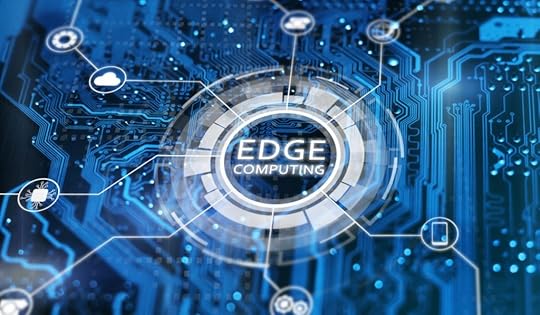Aditya Chatterjee's Blog, page 36
April 24, 2023
Dynamic Mode Decomposition (DMD): An Overview of the Mathematical Technique and Its Applications
Dynamic Mode Decomposition (DMD) is a data-driven method used to analyze and extract dynamic behavior from high-dimensional data sets. It is a powerful tool for studying fluid dynamics, image processing, and other complex systems. DMD is based on the Singular Value Decomposition (SVD) of a data matrix, and it provides a low-dimensional approximation of the original system.
This article will explain the key concepts behind DMD, including SVD and other related techniques, and provide ...
April 23, 2023
Exploring the Concept of Web 3.0: The Future of the Internet
The internet has evolved significantly over the past few decades, and we're now experiencing the era of Web 3.0. In simple terms, Web 3.0 refers to the next generation of the internet that aims to provide a more intelligent, secure, and decentralized network. With the rise of blockchain technology, the internet is gradually shifting towards a more decentralized and distributed architecture, offering greater control and privacy to users.
Table of contents:
What is Web 3.0?Key features of Web 3....Variational Autoencoder with implementation in TensorFlow and Keras
In this article at OpenGenus, we will explore the variational autoencoder, a type of autoencoder along with its implementation using TensorFlow and Keras.
Table of content:What is an AutoencoderWhat is a Variational AutoencoderIts implementation with tensorflow and keras.Major Drawback of a variational autoencoderAlright, Let's get started.
What is an AutoencoderA unique kind of neural network called an autoencoder is taught to replicate its input in its output. For instance, an autoenco...
Application Structure of Flask
Flask is a web framework that is widely used for building web applications in Python due to its simplicity, flexibility, and easy-to-use API, making it a popular choice for web developers. The application structure of Flask is considered important as it enables the code to be organized by developers and aids in the creation of scalable and maintainable web applications. Code readability, maintainability, and the ease of incorporating new features into the application are improved by a well-struc...
April 22, 2023
JavaScript vs TypeScript
In this article at OpenGenus, you must have the complete idea of the similarities and differences between JavaScript and TypeScript.
Table of contents:
What is JavaScript?Features of JavaScriptWhat is TypeScript?Similarities between JavaScript and TypeScriptDifferences between JavaScript and TypeScriptWhat is JavaScript?JavaScript (or JS for short) is a light-weight object-oriented programming language which is used by several websites for scripting the webpages. It is an interpreted(a t...
Web Dev Roadmap 2023
This article at OpenGenus list the key topics and tools you must be aware of practically to be a strong Web Developer. This Web Dev Roadmap is the perfect starting point.
Types of web developerFront end development refers to the creation of the visible parts of a website or application that users interact with, such as the layout, design, and functionality of buttons, menus, and forms.
Back end development involves the creation of the underlying code and infrastructure that powers the front end...
Rise of edge computing and its impact on IoT

Edge computing has developed as a critical technology in the field of IoT in recent years. Edge computing is a distributed computing paradigm that, rather than depending on centralised cloud computing, brings computation and data storage closer to the devices that generate the data. Edge computing can reduce latency, improve data security, and increase network efficiency by processing data closer to its source. This essay will look at the benefits, use cases, problems, and future of edge computi...
April 21, 2023
Machine Learning for Robotics
At its core, Machine Learning is a subset of Artificial Intelligence that endows computers with the ability to learn data and make informed decisions. In the early days of its advent, Robotics were merely machines that were programmed to perform a trained set of repetitive tasks. However, the integration of Artificial Intelligence technologies with Robotics have brought out a plethora of opportunities to revolutionize diverse fields such as Healthcare, Agriculture, Logistics & Supply Chain etc. ...
Documentation with Swagger
In this article at OpenGenus, we are going to discuss the importance of documentation, how learning to document your systems is going to help you become a better programmer and systems architect and why should you use swagger when developing an API.
Most programmers have been in a situation where you open your code files that were written months ago, and you start reading, trying to understand what each of those functions and logic are supposed to do, after trying a lot you just give up and choo...
4 Types of backpropagation
In this article at OpenGenus, we have explained the 4 different types of Backpropagation.
Table of contentsIntroduction to BackpropDifferent types of BackpropStatic backpropagationRecurrent backpropagationResilient backpropagationBackpropagation through timeConclusionIntroduction to BackpropBack propagation is an algorithm used in supervised learning to train the neural networks. The algorithm works by adjusting the weights and biases of the nodes.It entails sending input data into th...



